On 22-23 April 2005, twelve people from as far as Peru attended the recent two-day T-CLIC (TRI/I-CORP Liner Integrity Center) Liner Integrity Survey (LIS) accreditation course in TRI’s new meeting room in Austin, Texas. I-CORP and TRI are both gsa Underwriters. The course, the third in a series, was held immediately after TRI’s one-day courses on geosynthetics CQA and GCL CQA, and was led by Dr. Ian D. Peggs. The new meeting room was a great success.
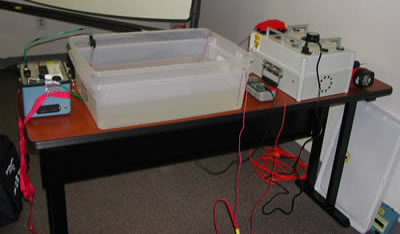 |
| Leak Integrity Survey (LIS) double liner model |
A class room session on history, theory, limitations, field practices, case histories, and developing technologies was illustrated with a double liner model and was followed by real surveys in a test pond, a soil-covered cell, and an exposed liner cell with conductive geotextile, GCL, conductive geomembrane, and geonet under the liner.
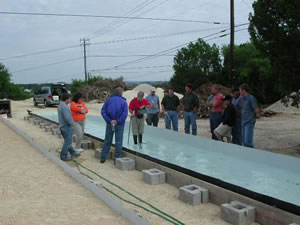 |
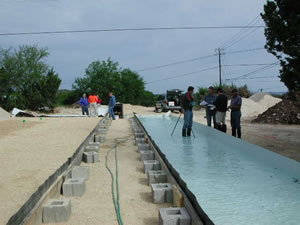 |
| Test pond | Soil covered cell (left) and pond (right) |
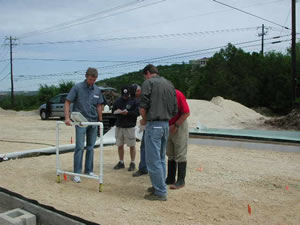 |
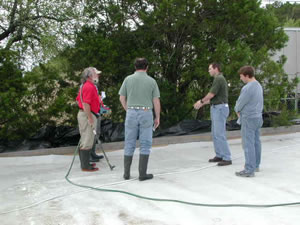 |
| Soil covered cell | Exposed liner cell |
Calibration runs were performed on artificial holes and surveys were made over actual holes. In the soil-covered cell the sensitivity-reducing edge effects of contact between cover soil and subgrade soil were made clearly apparent.
One team, requiring a distinct challenge, requested that a new hole be placed in the water-covered liner so they could find it – did they?
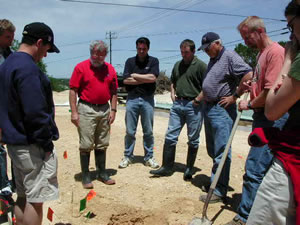 |
| Just before the dig – flags mark the location of each team’s estimate |
Each of the teams identified what they thought was the exact location of the hole in the soil-covered liner, then, at the conclusion of the course, the hole was excavated. None of the teams was more than 9 in. away from the hole. One was right over it.
It appears that at least three of the attendees will move on to the third and final part of accreditation – performing an actual field project under the guidance of instructor Ian Peggs.
Many thanks are due to GSE (a gsa Underwriter) and Tarkett-Sommer for providing materials, to Leak Sensors and R. T. Clarke for providing survey equipment, and to TRI’s Martine and his crew for constructing the cells.
The statistics of the numbers and locations of leaks and damage in primary geomembrane liners have been presented by Nosko et al. The following figure identifies the different features of a liner and the table shows where most leaks occur.
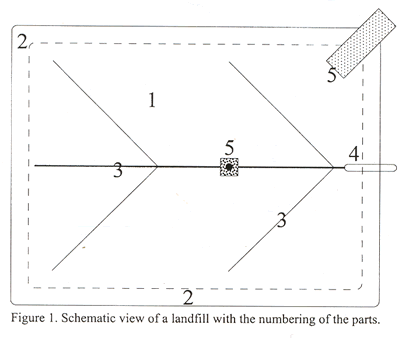 |
| Figure 1. |
 |
| Table 1. |
Surprisingly most leaks occur on the flat floor rather than at pipes and penetrations. This defines where CQA efforts should be concentrated.
For more reviews of T-CLIC’s LIS course, please go to the following links:
March 2004 course – 1st LIS course
September 2004 course – STS and CQM staff in-field test
March 2006 Course – review
or contact Ian Peggs for further information.











